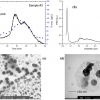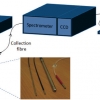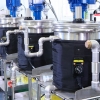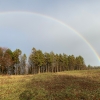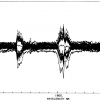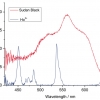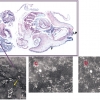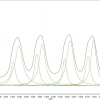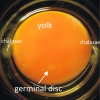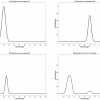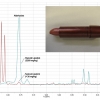TiO2 is widely used as a sunscreen UV filter and as a colouring agent in all types of cosmetic products. TiO2 has recently captured the attention of the scientific community since its safety assessment has been placed again under consideration. Inductively-coupled plasma atomic emission spectrometry (ICP-AES), square wave voltammetry (SWV) and sedimentation field-flow fractionation (SdFFF) are described in this article to characterise and quantify the TiO2 particles inside six commercial foundation creams.
Articles and Columns
Pages
This article shows that NIR spectroscopy offers the potential for bioprocess manufacturing companies to limit the variability in the biological production process, thereby increasing the yield and reducing the number of errors.
Applications of mass spectrometry in the clinical area have increased significantly in recent years and continue to expand. The complexity of analyses has also increased, with work being undertaken in clinical labs that would have been the reserve of research labs a few years ago.
This article surveys developments in the applications of Raman spectroscopy and the design of probes for use in endoscopes for the detection of early cancers in the throat and stomach.
Anaerobic digestion is a good solution to the joint problems of dealing with organic waste and producing “clean” energy. However, running the digesters at optimum performace is a complex business. NIR spectroscopy offers a solution to monitor a number of analytes within the reactor and in real time.
A poem with a spectroscopic theme by Professor Bill George of the University of Glamorgan.
Tony (A.M.C.) Davies stresses the importance of always looking at the spectrum, even if you [think you] know there’s nothing to learn. He relates his experience with noise in NIR spectra and what he has learnt from it. He would like us all to examine spectra for abnormality before relying on automated methods.
BBCEAS is a new cavity-based absorption technique that uses broadband sources rather than lasers. This offers potential improvements in signal-to-noise but often lower spectral resolution compared to techniques where the laser wavelength is scanned. The article concentrates on liquid-phase applications, an interesting new area since most cavity-based absorption studies have been performed on gas-phase species up to now.
As nanotechnology grows in importance, the need for rapid, easy and automated analytical methods to investigate new nanomaterials increases. Near infrared (NIR) spectroscopy has the potential to replace numerous methods for the investigation of a wide range of nanostructured materials and with particular potential in the area of PAT.
M. Hässig,a K. Altwegg,a H. Balsiger,a B. Schläppi,a J.J. Berthelier,b B. Fiethe,c S.A. Fuselier,d J. De Keysere and M. Rubinf
aPhysikalisches Institut, University of Bern, Sidlerstr. 5, CH-3012 Bern, Switzerland
bLATMOS, Saint Maur, France
cInstitut of Computer and Network Engineering, Technische Universität Braunschweig, Germany
The authors describe the use of a range of complementary methods to explore cellular, physiological and behavioural mechanisms underlying Al accumulation and toxicity, and its eventual fate, using the pond snail as a model organism.
Raman spectroscopy is to be used as one of the analytical techniques for the European Space Agency’s ExoMars mission to identify the geological and biogeological spectral signatures that could herald the presence of extinct or extant life on Mars. The article looks at the benefits of Raman spectroscopy for this and the research on Earth to build knowledge of the spectra of organisms living in extreme conditions here.
Peter Jenks is concerned at the lack of mutual help available on the Internet within the field of analytical chemistry. Other fields, outside science, have strong communities where enthusiasts give freely of their advice and time; why not in analytical chemistry? Please tell us your views by adding a comment to this column article.
1H NMR spectra are usually interpreted by hand, which is very time consuming, and can become a process bottleneck in fields such as high-throughput NMR. Greater automation of the spectral analysis process has become essential if NMR is to be of value as a high-throughput analytical method in the future.
This article describes the analysis of cells from the pulp of the feather by IR spectroscopy and the possibility of using infrared imaging of intact eggs to determine bird gender.
Tony Davies and Tom Fearn present “A digression on regression”. They turn their attention to one of the simpler regression techniques, Classical Least Squares (CLS). As well as an explanation of the basics, they explain why it is not often used in spectroscopy, and give the pros and cons of various regression techniques.
Nati Salvadó, Salvador Butí and Trinitat Pradell have used a number of techniques to investigate changes in pictorial techniques in Catalan paintings in the 15th century. The combination of different techniques is of particular value. The use of synchtrotron radiation as a light source is also an advantage.
Dirk Lachenmeier, Marina Gary, Yulia Monakhova, Thomas Kuballa and Gerd Mildau describe “Rapid NMR screening of total aldehydes to detect oxidative rancidity in vegetable oils and decorative cosmetics”. Lipid oxidation produces rancid products, which are both unpleasant and potentially toxic. The authors describe the use of NMR to screen food and cosmetic products. Whilst, vegetable oils were generally found to be in good condition, German women may wish to be careful of their lipstick, especially if they have had kept it for a while!
Roumiana Tsenkova introduces us to the field of “Aquaphotomics” which she has pioneered. The potential information held by water in biological systems coupled with NIR spectroscopy’s ability to extract a large amount of information at once, means that Aquaphotomics may be of great importance in the study of living organisms.
Time for a good whinge (“complain persistently and in a peevish or irritating way”—Oxford Dictionaries Online) and to get a little controversial. Having had a year to look at the resources available to us to help educate our budding spectroscopists, I have been disappointed that much of the educational resources available online appear incomplete or outdated. For a generation of students brought up in schools with interactive whiteboards, good quality spectroscopic teaching materials of this nature are almost non-existent.

